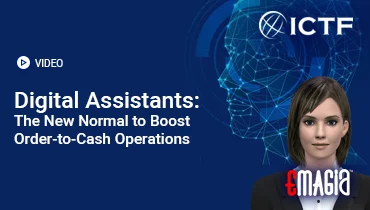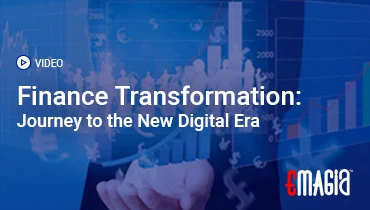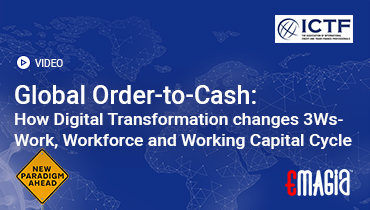In the dynamic world of business, organizations constantly need to acquire goods and services to support their operations. From everyday office supplies and maintenance materials to recurring consulting services, these purchases often happen repeatedly over time. Traditionally, each individual purchase would necessitate a new purchase order (PO), leading to a mountain of paperwork, repetitive administrative tasks, and missed opportunities for cost savings. This fragmented approach can quickly become a significant drain on resources, slowing down procurement processes and diverting valuable time from strategic initiatives.
However, a smarter, more efficient solution exists for managing these recurring needs: the Blanket Purchase Order (BPO). This powerful procurement tool transforms how businesses engage with their suppliers for ongoing requirements, moving away from transactional, one-off interactions towards strategic, long-term partnerships. By establishing pre-approved agreements for a set period and value, blanket purchase orders streamline the entire purchasing cycle, offering substantial benefits in terms of efficiency, cost control, and supplier relationship management.
This comprehensive guide will delve into what is a blanket purchase order, clearly distinguish it from standard purchase orders, explore its profound strategic advantages, detail its key components, and provide best practices for its successful implementation. We will also address common challenges and highlight how mastering the blanket purchase agreement can revolutionize your procurement function, paving the way for greater operational agility and financial control.
Understanding the Core: What is a Blanket Purchase Order?
To fully grasp the power of this procurement tool, it’s essential to understand its fundamental definition and purpose.
Blanket Purchase Order Definition: A Flexible Agreement
A blanket purchase order, often abbreviated as blanket PO, is a long-term agreement between a buyer and a supplier for the recurring purchase of specific goods or services over a predetermined period, up to a certain monetary or quantity limit. Unlike a standard purchase order, which is issued for a single, specific transaction, a blanket purchase order meaning signifies an ongoing commitment to purchase from a particular vendor without needing to issue a new PO for every single delivery or service instance. This makes it a highly flexible and efficient purchase blanket agreement.
Other terms commonly used to describe this arrangement include blanket purchase agreement, blanket orders, blanket pos, or simply a po blanket. Regardless of the terminology, the core concept remains the same: it’s a strategic framework for managing repetitive procurement needs.
Purpose: Why Use a Blanket Purchase Order?
The primary purpose of a blanket purchase order is to streamline the procurement process for items or services that are frequently purchased from the same supplier. It aims to:
- Reduce Administrative Overhead: Eliminates the need to create, approve, and process individual purchase orders for every small, recurring transaction.
- Leverage Volume Discounts: By committing to a certain volume or value over a period, buyers can negotiate better pricing and terms with suppliers.
- Improve Efficiency: Speeds up the ordering process for end-users, as they can simply “release” against an existing blanket PO rather than initiating a new requisition.
- Enhance Supplier Relationships: Fosters long-term, stable relationships with key suppliers, leading to better service and collaboration.
Essentially, a blanket PO means moving from a transactional focus to a strategic partnership with vendors for ongoing needs.
Key Characteristics of a Blanket PO
A typical blanket PO includes:
- Pre-negotiated Terms: Pricing, quality standards, and delivery conditions are agreed upon upfront.
- Set Period: The agreement is valid for a defined duration (e.g., 6 months, 1 year).
- Maximum Value or Quantity: A ceiling is established for the total monetary value or quantity of goods/services that can be purchased under the agreement.
- No Specific Delivery Dates Initially: Specific delivery dates and quantities are determined through subsequent “releases” or “call-offs” against the blanket purchase order.
These characteristics differentiate it significantly from a standard, one-off purchase order.
Blanket Purchase Orders vs. Standard Purchase Orders: A Clear Distinction
Understanding the differences between these two types of purchase documents is crucial for effective procurement strategy.
Standard Purchase Order: The One-Time Transaction
A standard purchase order is a legal document issued by a buyer to a seller, authorizing a one-time purchase of specific goods or services. It typically includes precise details such as a fixed quantity, a fixed price per unit, a specific delivery date, and detailed specifications for the items. Once the goods are received and the invoice paid, the standard PO is considered fulfilled and closed. It’s ideal for unique, non-recurring purchases.
Blanket PO: The Ongoing Commitment
In contrast, a blanket PO (or blanket purchase agreement) is designed for ongoing, repetitive purchases. It sets up a framework for multiple, smaller transactions over time. While it defines the overall terms, period, and maximum value, the specific quantities and delivery dates are flexible and determined by subsequent “release orders” or “call-offs” made against the master blanket purchase order. This flexibility is the core of what is a blanket po.
When to Use Each: Strategic Application
Choosing between a standard PO and a blanket purchase order depends on the nature of the purchase:
- Use a Standard PO for:
- One-off equipment purchases (e.g., a new server).
- Project-specific materials with a defined quantity.
- Infrequent services from a new vendor.
- Use a Blanket Purchase Order for:
- Recurring office supplies (e.g., pens, paper, printer cartridges).
- Maintenance, Repair, and Operations (MRO) items.
- Regular consulting services or cleaning services.
- IT consumables (e.g., network cables, adapters).
- Raw materials for continuous production where demand fluctuates.
The strategic application of blanket purchase orders reduces transactional costs and speeds up the ordering process for end-users.
The Strategic Advantages of Implementing Blanket Purchase Orders
Adopting blanket purchase orders offers a multitude of benefits that extend across the entire organization, enhancing efficiency and financial performance.
1. Enhanced Efficiency and Streamlined Procurement
One of the most immediate impacts of blanket purchase orders is the dramatic reduction in administrative burden. Instead of generating a new PO for every small, recurring purchase, a single blanket PO covers multiple transactions over a period. This means:
- Fewer Individual POs: Less time spent on creation, approval, and processing of numerous small orders.
- Faster Ordering: End-users can quickly “release” items against an existing blanket PO, bypassing lengthy requisition and approval cycles.
- Reduced Paperwork: Less physical documentation, contributing to a more digital and automated procurement process.
This streamlining directly translates into significant time savings for procurement and finance teams.
2. Cost Savings and Better Pricing
Blanket purchase agreements provide a powerful lever for cost control:
- Volume Discounts: By committing to a larger aggregate volume or value over time, businesses can negotiate more favorable pricing, discounts, and terms with suppliers than they would for individual, smaller orders.
- Price Stability: A blanket purchase order locks in prices for the duration of the agreement, protecting the buyer from potential price increases due to market fluctuations.
- Reduced Transactional Costs: The administrative cost associated with processing each individual PO is significantly lowered when purchases are consolidated under a blanket PO.
These combined factors lead to tangible savings on the total cost of goods and services.
3. Improved Supplier Relationships
A blanket purchase agreement fosters stronger, more collaborative relationships with key suppliers:
- Long-Term Commitment: Suppliers appreciate the predictable demand and assured business volume, encouraging them to prioritize your organization.
- Streamlined Invoicing: Suppliers can issue fewer, consolidated invoices against the blanket PO, simplifying their billing process.
- Better Service: Stronger relationships often translate into improved service, faster response times, and greater flexibility from suppliers.
This mutual benefit creates a more efficient and harmonious supply chain.
4. Greater Control and Visibility
Blanket purchase orders enhance financial oversight and budgeting:
- Centralized Spending Tracking: All purchases against a blanket PO are tracked centrally, providing clear visibility into spending against the pre-approved limit.
- Easier Budgeting: Recurring expenses covered by BPOs become more predictable, simplifying budget forecasting and allocation.
- Reduced Maverick Spending: By channeling recurring purchases through established BPOs, organizations can minimize “maverick spending” (purchases made outside approved channels), ensuring compliance with procurement policies.
5. Reduced Cycle Times
The entire procurement-to-payment cycle is accelerated with BPOs. From the initial requisition by an end-user to the final payment, the streamlined process ensures faster delivery of goods and services, and quicker processing of invoices, contributing to better cash flow management.
Key Elements and Types of Blanket Purchase Agreements
To effectively utilize these agreements, it’s important to understand their core components and variations.
Essential Components of a Blanket PO
While a sample blanket purchase order might vary slightly, key elements typically include:
- Supplier Details: Full legal name, address, and contact information of the vendor.
- Buyer Details: Your company’s name, address, and relevant contact information.
- Agreement Period: The start and end dates for which the blanket purchase agreement is valid.
- Maximum Monetary Limit: The total maximum dollar amount that can be spent under the blanket PO. This is crucial for financial control.
- Item Description: A general description of the goods or services covered (e.g., “Office Supplies,” “IT Consumables,” “Consulting Services”). Specific details are usually provided in individual releases.
- Payment Terms: Agreed-upon payment terms (e.g., Net 30, Net 60) for invoices issued against the BPO.
- Delivery Terms: How and where goods/services will be delivered.
- Terms and Conditions: Any specific legal or operational clauses governing the agreement.
- Internal Reference Numbers: Unique identifiers for the blanket purchase order within your system.
A well-drafted blank purchase agreement ensures clarity and avoids disputes.
Types of Blanket Orders
Blanket orders can be structured in a few common ways:
- Quantity-based Blanket PO: This type specifies a fixed total quantity of an item to be purchased over the agreement period, but the delivery schedule and individual release quantities are flexible. For example, a blanket po example could be 1,000 units of a specific component to be delivered as needed over a year.
- Value-based Blanket PO: This is more common, setting a maximum monetary limit for purchases over the period. The quantities of individual items can vary, as long as the total spend remains within the agreed-upon value. This offers greater flexibility for items with fluctuating demand or prices.
- Service-based Blanket PO: Used for recurring services where the scope is defined, but the frequency or specific hours might vary. For instance, a blanket order example for cleaning services might specify a monthly fee up to a certain number of hours.
Understanding these types helps in choosing the right structure for your specific procurement needs.
Implementing Blanket Purchase Orders: Best Practices for Success
To maximize the benefits of blanket purchase orders, a strategic and well-executed implementation is key.
1. Strategic Supplier Selection
Choose suppliers with whom you envision a long-term, stable relationship. They should be reliable, offer competitive pricing, and have a track record of good service. This long-term commitment is fundamental to the success of a blanket purchase agreement.
2. Define Clear Scope and Terms
Be precise about what goods or services are covered by the blanket PO, the exact duration of the agreement, and the maximum monetary or quantity limit. Ambiguity can lead to disputes and inefficiencies. A detailed blanket purchase order example should clearly outline these terms.
3. Effective Communication and Training
Ensure that all internal stakeholders (e.g., department managers, end-users) and the supplier fully understand the blanket PO process. Train end-users on how to properly create “releases” or “call-offs” against the master blanket PO in your system. This is crucial for smooth operation and to avoid “maverick” spending.
4. Regular Monitoring and Review
Don’t just set it and forget it. Continuously monitor:
- Spend Against Limit: Track how much has been spent against the blanket PO’s maximum limit to avoid overspending or needing early renegotiation.
- Supplier Performance: Regularly assess the supplier’s delivery times, quality, and responsiveness.
- Pricing and Terms: Periodically review the competitiveness of the pricing and terms, especially if market conditions change significantly.
5. Integration with Procurement Systems
Leverage your ERP system or dedicated procurement BPO providers’ software to automate the creation, tracking, and management of blanket purchase orders. This integration streamlines workflows, reduces manual errors, and provides real-time visibility into spending. Many procurement BPO companies offer solutions that facilitate this.
6. Centralized Documentation
Keep all blanket purchase agreements and associated release orders centrally documented and easily accessible. This ensures that all relevant parties can quickly reference terms, conditions, and remaining balances.
Challenges and Pitfalls in Credit Management with BPOs
While highly beneficial, blanket purchase orders are not without their potential downsides or challenges, particularly when considering broader financial and credit risk management.
1. Potential for Over-commitment and Underutilization
Committing to a large blanket purchase agreement can tie up a significant portion of the budget, even if the actual need for the goods/services decreases. If the committed volume isn’t met, the buyer might lose out on better pricing or be stuck with excess inventory. This highlights a need for careful forecasting when setting up a blank purchase order.
2. Reduced Flexibility to Market Changes
A long-term blanket PO can limit a company’s agility if market prices for the goods/services drop significantly or if new, more innovative suppliers emerge during the agreement period. Being locked into a fixed price or supplier can mean missing out on better deals. This is a common pitfall in credit management related to long-term contracts.
3. Supplier Performance Deterioration
While BPOs foster strong relationships, a long-term commitment with a supplier whose performance declines (e.g., quality issues, late deliveries) can become problematic. It can be challenging to switch suppliers mid-agreement, impacting operations. This underscores the need for continuous monitoring and clear performance clauses in the blanket purchase order definition.
4. Risk of Maverick Spending
Despite having a blanket PO in place, if internal processes are not robust or end-users are not properly trained, “maverick spending” (purchases made outside the established BPO) can still occur. This undermines the cost-saving and control benefits of the po blanket.
5. Managing Credit Risk for the Supplier
From the supplier’s perspective, a blanket purchase agreement represents a significant credit exposure. They are committing to provide goods/services over time without immediate full payment. Therefore, they will conduct their own business credit risk management or commercial credit risk management on the buyer, assessing the buyer’s financial stability and ability to honor the long-term commitment. This is a crucial aspect of credit and risk management that underpins the BPO.
Emagia’s Role in Optimizing Procurement and Financial Operations
While Emagia’s core focus is on revolutionizing the Order-to-Cash (O2C) cycle, its AI-powered Autonomous Finance platform indirectly but significantly contributes to the success and optimization of strategies like Blanket Purchase Orders. A healthy, efficient O2C process directly impacts a company’s financial liquidity and overall financial health, which are crucial for effective procurement and supplier relationships.
Emagia’s solutions, such as Intelligent Cash Application and AI-driven Collections, accelerate the conversion of sales into cash. By significantly reducing Days Sales Outstanding (DSO) and minimizing unapplied cash, Emagia ensures that a company has more readily available working capital. This improved liquidity empowers procurement teams to honor their blanket purchase orders promptly, take advantage of early payment discounts from suppliers (if applicable), and negotiate even more favorable terms due to their strong financial standing. A company with robust cash flow, facilitated by Emagia, is a more attractive and reliable partner for suppliers entering into blanket purchase agreements.
Furthermore, Emagia’s capabilities in credit risk management for a company’s *own* customers contribute to overall financial stability. A financially robust organization, supported by Emagia’s intelligent automation across its finance functions, presents a lower credit risk to its suppliers. This can lead to greater trust, more flexible terms, and a willingness from suppliers to enter into long-term blanket purchase orders. By streamlining the entire financial backbone of an enterprise, Emagia indirectly but powerfully enhances a company’s ability to leverage strategic procurement tools like BPOs for maximum benefit.
Frequently Asked Questions (FAQs) About Blanket Purchase Orders
What is a blanket purchase order meaning?
A blanket purchase order meaning refers to a long-term agreement with a supplier for recurring purchases of specific goods or services over a set period, up to a maximum value or quantity. It streamlines repetitive buying by eliminating the need for a new PO for each transaction.
How does a blanket purchase agreement differ from a standard purchase order?
A blanket purchase agreement is for ongoing, recurring purchases with flexible quantities and delivery dates over a period. A standard purchase order is for a single, one-time purchase with fixed quantities and specific delivery dates. The blanket PO acts as a master agreement for multiple smaller “releases.”
What are the main benefits of using blanket purchase orders?
The main benefits of blanket purchase orders include significant administrative cost savings, enhanced efficiency in the procurement process, better pricing through volume discounts, improved supplier relationships, greater control over spending, and reduced purchase cycle times.
Can a blanket PO have an unlimited value?
No, a blanket PO typically has a defined maximum monetary limit or quantity limit. This is crucial for budgetary control and risk management. While the exact limit can be high, it is rarely “unlimited” as it represents a financial commitment.
What is a blanket order example in practice?
A common blanket order example is for office supplies. Instead of issuing a new PO every time pens or paper are needed, a company sets up a blanket purchase order with an office supply vendor for a year, with a maximum spend limit. Employees can then simply “call off” items against this existing BPO as needed.
How do blanket purchase orders impact cash flow?
Blanket purchase orders can positively impact cash flow by securing better pricing and terms, potentially leading to lower overall procurement costs. However, they also represent a commitment of funds, so effective cash flow forecasting and management are still essential to ensure the company has the liquidity to honor its agreements.
What is the role of procurement BPO providers in managing these agreements?
Procurement BPO providers (Business Process Outsourcing) can manage the entire procurement lifecycle, including the setup, administration, and monitoring of blanket purchase orders on behalf of a client. They leverage their expertise and technology to optimize these agreements, ensuring compliance and maximizing benefits.
Conclusion: The Strategic Imperative of a Modern TMS
The era of paper-based and semi-digital invoicing is rapidly drawing to a close. Customer e-Invoicing stands as a pivotal technology, transforming the way businesses transact and manage their financial flows. By embracing true electronic invoicing, organizations unlock a cascade of benefits, from substantial cost reductions and unparalleled efficiency to improved accuracy, faster payments, and enhanced compliance.
The strategic imperative is clear: to move beyond traditional methods and adopt a robust electronic invoicing system that seamlessly integrates with existing operations. This shift is not merely a technological upgrade; it’s a foundational step towards a fully automated and intelligent Order-to-Cash cycle, empowering finance teams to focus on strategic analysis rather than administrative burdens. By making Customer e-Invoicing a cornerstone of their financial strategy, businesses can secure a competitive edge, foster stronger relationships, and pave the way for a more agile, profitable, and sustainable future.



